-
Genealogy & Names
-
Tourist Information
-
Culture & Reference
VALENTINES GIFTS FROM IRELAND - VISIT IrishNation.com Only 38 Days To Go! |
|
Aug 2020 
Irish Forest Scene from Free Photos Of Ireland |

|
|

| Popular Articles from Recent Newsletters: |


|
Covid-19 continues to play havoc with work-forces throughout the world. Ireland is no exception with the headline rate of unemployment now at levels not seen since the disastrous levels reached in the wake of the 2008 economic crash (17.3%). The 15.4% currently registered as unemployed includes those in receipt of the various Covid-19 payments. In June the rate was 23.1%. There is however some hope that many of these workers will be able to return to their original jobs at some stage, although certain sectors such as tourism and air-flight related industries are facing bleak prospects. Ireland is expected to borrow heavily to combat Covid-19. The 2008 economic crash resulted in the National Debt rising to 130 Billion Euro, with just over one third of that amount being used to bail-out the banks. Current expectations are that at least 30 Billion Euro will be borrowed to weather the Covid-19 storm, although realistically that figure could very easily grow much higher. Fortunately European and international interest rates make this borrowing much less expensive than the punishing rates post-2008. With the full attention of the nation being focussed on the fight against Covid-19 it is easy to forget that there is still a Brexit time-bomb ticking away merrily in the background. Britain has already left the European Union but the intricacies of the divorce deal are still to be defined with the deadline for an agreement to be reached set to expire at the end of 2020. If that date is reached and no agreement is in place then the dreaded 'hard Brexit' that nobody really wants will come to pass. Financially this will have severe consequences for both the EU and the British. The temperature gauge has been turned up again recently by threats from the Boris Johnson Government in London that they may effectively rip up the Brexit international Treaty agreement that they signed up to. This 'Withdrawal Agreement' was set to ensure that there would be no 'hard border' on the island of Ireland between the 26 Counties in the Irish Republic and the remaining 6 Counties in Ulster. Former Prime Ministers Theresa May, Gordon Brown, Tony Blair, John Major and David Cameron have all spoken out against the 'UK Internal Market Bill' that, if implemented, could spell disaster for Irish concerns surrounding Brexit. When the owner of 'McGinn's Hop Store' pub in Galway city lifted his phone to take a photo of one of his elderly patrons enjoying a pint of Guinness, he can hardly have expected the photo to go viral. 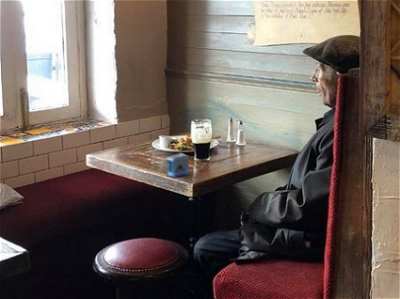
The Covid-19 regulations surrounding the operation of public houses in Ireland are complicated and controversial. Visitors to a pub are allowed to stay for one hour and 45 minutes and must buy a 'substantial' meal while there. Some pub owners improvised by offering 'soup and sandwiches' fare to meet these obligations while other pubs have remained closed since March as they simply do not have the facilities or licence to offer food to their customers. Many will never re-open. For months now those pub-owners who could not satisfy the regulations have been claiming that their businesses are also vital centres of community, particularly in rural locations where loneliness among elderly people is an especially difficult problem. The photo of this local Galway man enjoying his 'pint of plain' having finished his meal is ordinary enough, but it is the presence of the alarm clock on the table that has garnered most attention. The image has been interpreted as the man carefully not wanting to exceed his allotted time. However the truth is that he also wanted to ensure he made it home in time for the news. Regardless, the image has come to signify the unfair burden that the Covid-19 regulations have placed on the elderly and perhaps also to signify the slower, hidden costs of the regulations designed to protect older people. |

|
||||

|
It was Christmas morning 1952. I was being let by the hand to early Mass in Lacken. Why did my mother have me by the hand since, in the words of Patrick Kavanagh, I was 'six Christmases of age'? It was partly because my mother considered me 'wild' - although in later life I would always claim that I was an eejit but didn't tick any of the boxes that would constitute 'wild'. 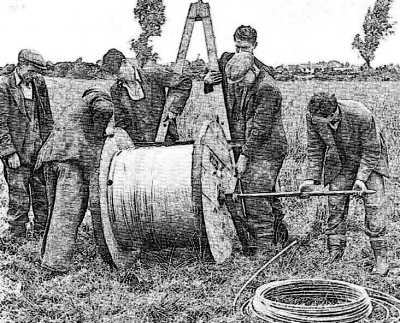
The valley was in darkness save for the candles in the windows to welcome the Redeemer. It was a scene that wouldn't ever be repeated. Rural electrification was just arriving in Lacken and the surrounding area but had not yet been switched on. Post- dawn it would be possible to see poles which had stood, complete with insulators, all summer, sentry-like across the countryside and now strung with high-tension cables. An ESB official, one Mr Heevy from Naas, had called to the school to complain about the number of insulators which had been the victim of stone-throwing. The schoolboys from the townland of Ballinastockan were the prime suspects. Not because they were more destructive than the rest of us but they were young marksmen with a stone or any small missile. If you stood close to an ESB pole and looked up it appeared to be falling, something to do with an illusion caused by the rolling clouds. The term 'optokinetic movement 'would have meant very little the First Communion class of 1952. Not every house opted for the ''lectric light'. This was mainly out of economic necessity and the 'cups' on the chimney became somewhat of a status symbol. The switching-on ceremony would be performed in The Parish Hall, Valleymount, in January 1953 but for now the valley's illumination was confined to candles, oil-lamps and the wick-in–a-Bovril-bottle source of illumination known as a 'Jack-lamp'. Adult Mass-goers spoke of the well-dressed men in Ford vans who were travelling the district selling everything from electric irons, to electric kettles to electric fires. Conversation in the area was dominated by several fanciful theories. Boiling water in an electric kettle 'takes all the oxygen out of it'. There was also a story about a cat being electrocuted (I heard the word 'executed' used). In the smoke-filled cabins of west Wicklow it was believed that you couldn't wash a light bulb. And then of course somebody came up with the stupid riddle: 'How does a one-armed man change a light-bulb?'. 'He keeps the receipt'. The fact that improved illumination would highlight physical defect was not overlooked. It was rumoured that one elderly farmer who had two daughters of marriageable age but not blessed with film-star looks was heard to say, 'we'd better get rid of thim two wans before the 'lectric light comes.' One night when such matters were being discussed in a rambling-house Jack Farrell was sitting in the corner. Jack was a Tallaght man who had inherited a small cottage in the area. There were those who would insist that not all of Jack's stories ran parallel with the highest ideals of veracity. Anyway Jack related the following story. Jack's father ,farmed in Killenarden (it was at the back of Jobstown... and still is). He went for the pension and was asked if he remembered 'the Big Wind'. The Big Wind was on 6th January in 1839 so if Jack's father remembered it that would leave him over 70 in 1908. Farrell senior was more than equal to the challenge. According to Jack his father told the pension officer that, on Sunday sixth of January 1839 he was sitting at the fire when a squall of wind took the roof straight off the house and it landed somewhere about Kippure. A pot of potatoes that was hanging on the pot-rack was blown up the chimney and at the top wasn't it struck by lightning. The steam that came out of it was a fright to the world and, says Jack: 'They were the first potatoes in Ireland to be boiled by electricity'. The specified depth for the main-line poles was six foot two inches. Local men were employed as labourers and Neddy Cullen, who was vertically challenged (it was said of him that he could play hurling under a bed) was digging a hole in Tim Browe's field. When he was standing in the hole head and shoulders above the ground he uttered the immortal words: 'If that hole is not six feet deep my name is not Neddy Cullen.' When the lorry loads of poles began to arrive it was the first time that I had smelled creosote. When they were hoisted by a number of men it was ensured that each pole was parallel with the perpendicular. In the pre-digital age this was achieved with a length of string and a suitable, small, piece of Wicklow granite serving as a plumb-bob. As children we re-enacted everything that we saw the 'wire men' doing during the day. We were digging holes for 'poles' and taking our mothers' spools of thread to string 'wires.' I recently saw a cartoon depicting a person of my age with the caption, 'I've become so forgetful that I can now play my own surprise parties.' I understood but I can vividly remember the writing on the first, yellow, warning sign that I saw on an ESB pole sixty four years ago: DANGER Keep away. It is dangerous to touch the electric wires. Beware of fallen wires. My old school mate, Pat Brennan, brought the 'lectric light' out to the shed and the pig-sty using wire from a bed spring. You'd be talking about health and safety! When we were both aged under ten years of age Pat showed me how to by-pass a meter and twenty years later when I was living in a flat in Ranelagh... No ordinary household would dream of buying a fridge and for me, and the twenty-seven, other juniors in the 'little School' it was a day to be remembered when Mrs. White brought in a tray from Burke's shop bearing twenty-eight penny ice-creams. Nocturnal radiance, and a single round three-pin socket was the limit for most houses but electricity broadened the cultural horizons of the community. When Julia Carroll who had spent a lifetime in New York returned for a holiday her husband, Harry Wenkee, was able to show pictures in the local school. And a travelling (called a 'fit-up') show came to Brennan's field. For most of us youngsters it was out first experience of stage-shows. Singing, dancing and drama meant entertainment for all. Plays such as 'Murder in the Red Barn' mesmerised us rural innocents. Conjuring was, to us, 'pure magic' but the boss of the outfit, Jackie Ellis, was the best hypnotist I have ever seen. Audience participation in his act brought the house down. One of my schoolmates was asked by Mr. Ellis to sit on an ordinary kitchen chair. When his posterior touched the seat he jumped; the chair was 'red-hot.' The appearance of a fit-up in the area after so many years triggered reminisces among the older males. They spoke of a travelling show which visited the district and set up in the 'quarry-hole' in Ballinastockan in the early days of the century. There would be sly grins when a male septuagenarian would make reference to 'Tilly.' A showgirl from the quarry-hole in the dim and distant past. Even at age 11 I gathered from the nudge, nudge, wink, wink, flavour of the talk that Tilly was in the habit of exposing more than her ankle. In the 40s and 50s a resident of Lacken or Ballinastockan carrying an acid-battery, (I believe the correct term was an accumulator), to Blessington to be charged was a familiar sight. Electric wirelesses gradually took over and by the late '50s a large carboy surrounded by straw in a wicker basket in Johnny Kelly's garage was the only remaining relic of the old battery wireless. About the memories evoked by the olfactory sense, Marcel Proust, in The Remembrance of Things Past, has put it much better than I can: When nothing else subsists from the past, after the people are dead, after the things are scattered... the smell and taste of things remain poised a long time, like souls... bearing resiliently, on tiny and almost impalpable drops of their essence, the immense edifice of memory". Now, when a neighbour is treating his garden fence and the smell of creosote wafts on the summer air. It is no longer the 21st century. I don't have the free travel. It's 1952 and I am, once again, a six-year old in Kylebeg. ~~~ Mattie Lennon is writer who can be found at: http://www.mattielennon.com |


find out more |

|
The Daghda was the Father God of the Tuatha Dé Danann. His position was so esteemed that he was described in the ancient medieval manuscript the 'Coir Anmann' thus: 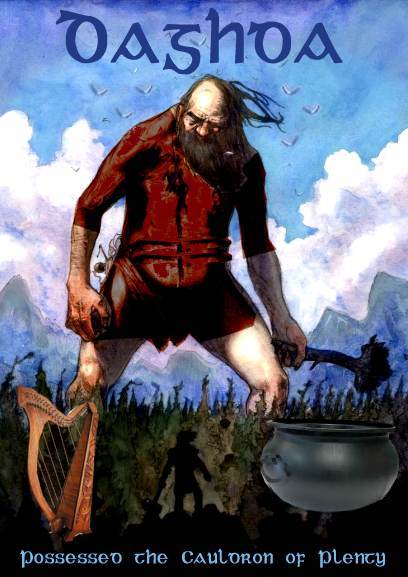
'He was a beautiful God of the heathens, for the Tuatha Dé Danann worshipped him - for he was an earth-God to them because of the greatness of his magical power.' Daghda was a mystical, supernatural being with magical powers, and his strength derived from his knowledge of the hidden, which in folklore was the highest kind of wisdom. He possessed three particular implements of magical power. The first was the large bronze cauldron which was so enchanted that no matter how many people sat down to eat around it, they would all be fed. The second was the mighty club the Daghda carried with him. Its enormous size meant that it had to be transported on wheels, and it took ten men to lift it. One end of the club killed the living with one blow, while the other end could revive the dead. The Daghda also had a magical living harp, the Uaithne, called the Four-Angled Music, decorated in gold and jewels, on which he could play music to inspire any mood. It was his playing on this harp that made the seasons arrive in their proper order. This mystical instrument also played three types of music, the music of sorrow, the music of joy and the music of dreaming. Stories of the Daghda are both plentiful and legendary! One such tale recounts how the Dagda had an affair with Boand, the wife of Elcmar. In order to hide their affair, the Daghda made the sun stand still for nine months and therefore their son, Aengus, was conceived and born in the same single day. It was this same son Aengus who was to trick the Daghda out of his own home at Brú na Bóinne (Newgrange). Aengus had been away searching for a love he encountered in his dreams but returned to find that the lands of Daghda had been divided by his father among his children, leaving none for him. Needless to say Aengus took exception to this and hatched a plan to regain his birthright. Aengus asked his father if he could be allowed to live at Bru for 'lá agus oiche', meaning 'day and night'. Daghda took it that his son intended to remain for a single day and a single night but such was the manner in which Aengus phrased his request, the request that was granted by the Daghda, that the 'day and night' represented the continuous cycle of time, day after night, and thus Aengus took possession of Brú na Bóinne for all time. The tale is recalled in 'Gods and Fighting Men', by Lady Gregory: But however great a house the Dagda had, Angus got it away from him in the end, through the help of Manannan, son of Lir. For Manannan bade him to ask his father for it for the length of a day and a night, and that he by his art would take away his power of refusing. So Angus asked for the Brugh, and his father gave it to him for a day and a night. But when he asked it back again, it is what Angus said, that it had been given to him for ever, for the whole of life and time is made up of a day and a night, one following after the other. Perhaps it is fitting that the Daghda met his end by serving the Tuatha Dé Danann whom he commanded for eighty years. The Tuatha Dé Danann fought the Fomorions at The Battle of Magh Tuireadh' and it proved to be a crucial event. The Daghda employed all of his magical instruments in the battle and even made sure that the war Goddess, Morrigan, would be on their side by seducing her. When Morrigan had earlier first seen the Daghda approaching, she stood with one foot on either side of a river to try and make sure he couldn't get at her, but she ended up being so pleased with his skills as a lover that she gave her favour to his side in the battle! The Daghda then approached the Fomorians in an effort to delay them, seeking a truce. The Fomorians mocked him, filling a cauldron with porridge, gallons of milk, meat and fat and even pigs and goats. The mighty meal was boiled with the Daghda instructed to eat the volume entirety or else face death. The Daghda was not to be outdone! He scooped up huge portions of the meal with his giant ladle, eating and eating to the amazement of the onlookers, finally finishing his task before collapsing into a deep sleep, with his huge bloated stomach as high as a tree! Despite being victorious at the Battle of Magh Tuireadh, the Daghda succumbed to a wound inflicted by Cethlenn, the wife of Balor of the Fomorians. The influence of the Daghda through the genealogies of Irish mythology is enormous. Apart from Aengus the Daghda was also the father of Bobh Dearg (grandfather of the Children of Lir), Cermait, Midir, Aine, and Brigid - marvelous and important characters all! He is remembered as perhaps the most important of the Gaelic Gods with his influence reverberating through the mythological annals that were to follow. |

|
The winner was: beckysusan123@gmail.com who will receive the following: A Single Family Crest Print (usually US$24.99) Send us an email to claim your print, and well done! Remember that all subscribers to this newsletter are automatically entered into the competition every time. I hope that you have enjoyed this issue! 
by Michael Green, Editor, The Information about Ireland Site. http://www.ireland-information.com Contact us (C) Copyright - The Information about Ireland Site, 2019. 17 Páirc Ghrainbhil, Carraig Dubh, Contae Baile átha Cliath, Ireland Tel: 353 1 2893860 |

|
MARVELOUS GIFTS FOR ANY OCCASION FREE DELIVERY TO YOUR DOOR 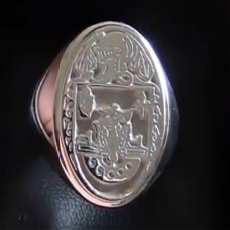
BIG REDUCTIONS! Stunning Family Crest Signet and Seal Rings 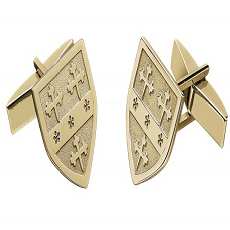
DISCOUNTED FOR A LIMITED TIME Elegant Cufflinks 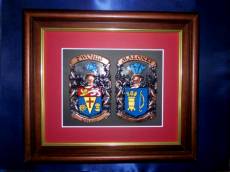
Incredible Family Crest Plaques Made in Ireland 
Superior Framed Family Crest Parchments 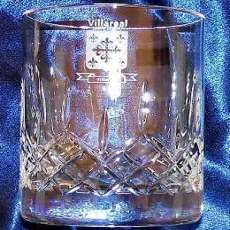
Gorgeous Glistening Galway Crystal 'Your-Name' Old Irish Sign NEW DESIGNS! 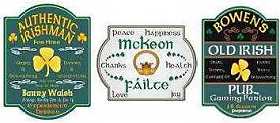
From US$34.99 - Free Delivery 
New Designs available on our Coffee Mugs 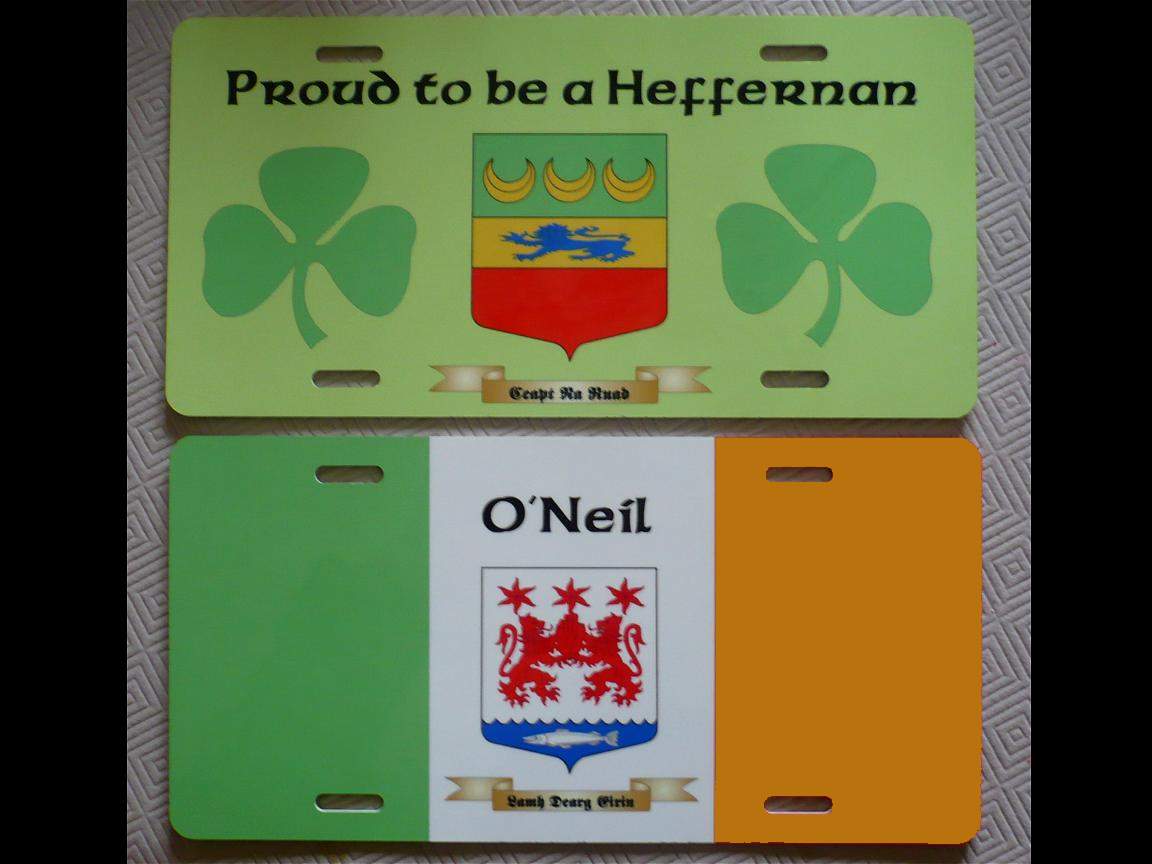
Personalized Licence Plate 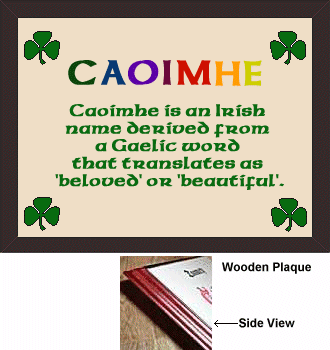
Personalized First Name Plaque. Great for Kids! 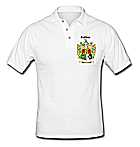
'Your-Name' Polo & Tee Shirts 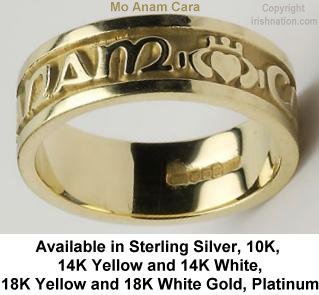
From US$69 Delivered BIG REDUCTIONS! Stunning Engraved Rings from Ireland with Irish Language Phrases. Mo Anam Cara: My Soul Mate Gra Dilseacht Cairdeas: Love, Loyalty, Friendship Gra Go Deo: Love Forever Gra Geal Mo Chroi: Bright Love of my Heart SEE MORE GREAT OFFERS AND DISCOUNTS AT: IRISHNATION.COM FREE DELIVERY FOR A LIMITED TIME! |
